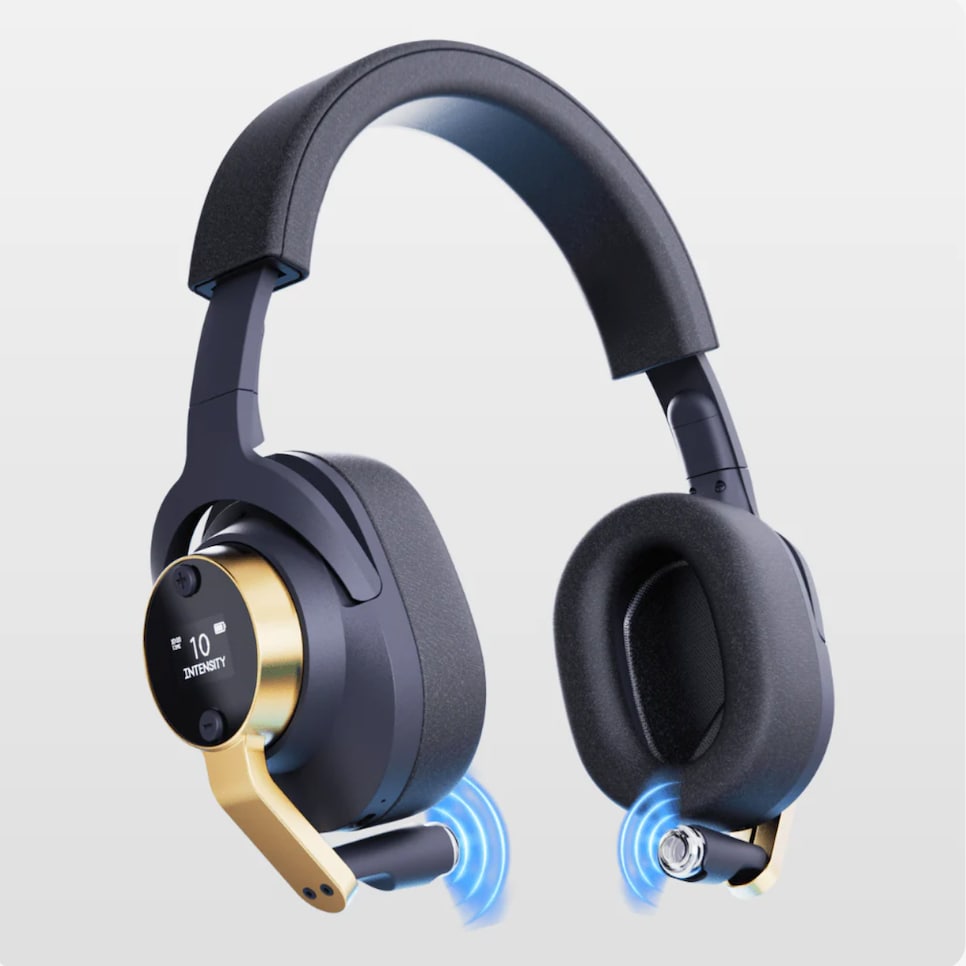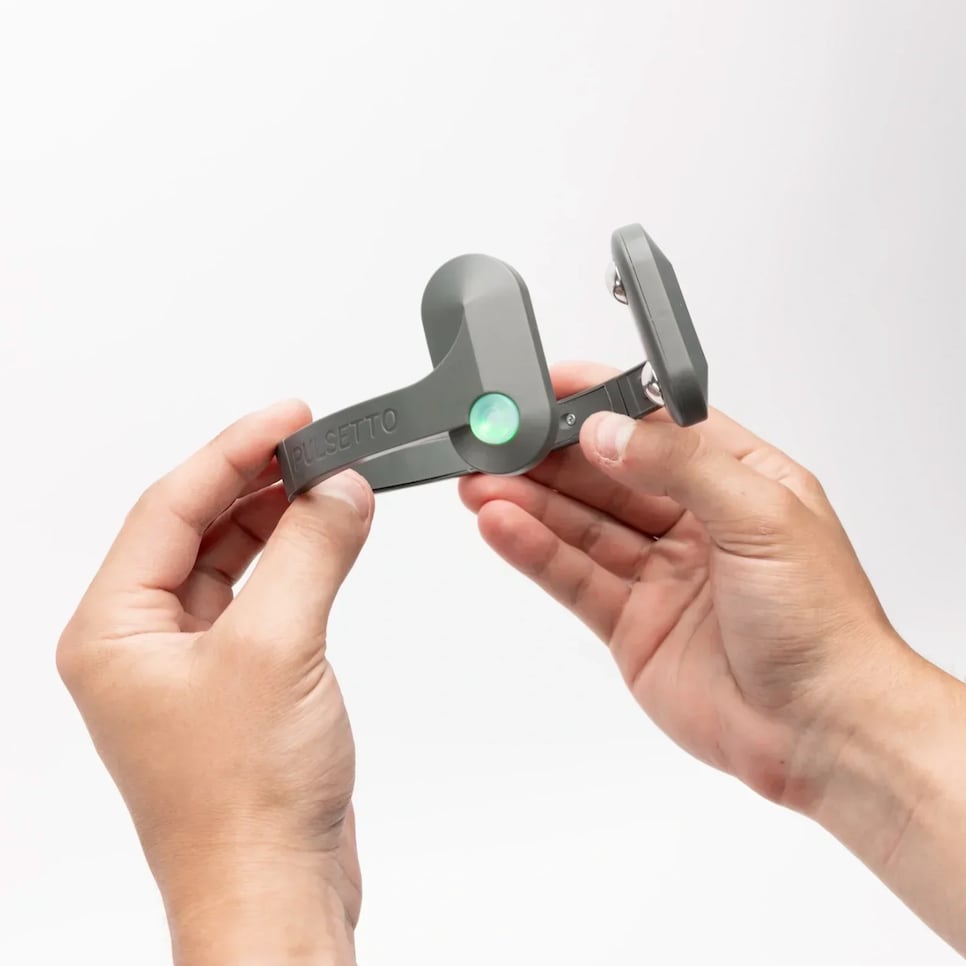It’s true that all you need are two fingers and a stopwatch to figure out whether your heart is in overdrive as you play golf. Your pulse/heart rate is a key indicator of how the sympathetic nervous system, the fight or flight nerves, are behaving. Knowing you are nervous is one thing, but what if you could dampen those feelings and the manifestations it has on your body (shakey hands, a too-quick backswing, etc.)?Many of the players in the Ryder Cup at Bethpage Black know about a “hack” that you also can utilize when you’re stepping on the first tee or standing over a testy four-footer.It’s something called “heart-rate variability” or HRV. If you’re not familiar with the term, HRV is the measured time between heart beats. Just because your pulse is 70, that doesn’t mean the time between beats is uniform. In fact, it shouldn’t be. A variance in time between beats is a key indicator of good health, says Ben Shear, Golf Digest’s Chief Fitness Advisor. Shear has trained many pro golfers (including European Ryder Cup captain Luke Donald) and is the architect of Golf Digest’s Fitness Trainer Certification. His gym is in Jupiter, Fla.Although the science of HRV has been around since the 1960s, the training for it has become increasingly popular among elite athletes only in the past decade or so. There are a number of devices that can improve HRV (we’ll get to those later in the story), but even hollistic techniques such as meditation, sleep and breathwork can improve the variance in the gaps between beats.If your HRV improves, so does your ability to adapt to stress, to squelch the sympathetic nervous sytem, improve endurance and recover from fatigue. Imagine yourself on the 18th hole of a big golf match. You and your opponent have been duking it out for hours and it all comes down to three things: 1) How stressed your brain is; 2) How nervous you are, 3) How much energy you have left to finish strong. If your HRV is better than your opponent’s, we like your chances, Shear says. “HRV is a measure that reflects the ANS (autonomic nervous system) function, which looks at stress,” Shear says. “It can be used in athletic performance to accurately reflect recovery status, determine if an athlete is overtraining and identify when an athlete might be more or less adaptive to training. The measure can also potentially predict when a player might or might not play well, and even when they are more susceptible to illness or injury.”As Shear says, monitoring HRV and working to improve also is an important step to understanding when to train and when to rest. You know those days when you hit a bucket of balls for over 60 minutes? Check your HRV the next day and time how uniform the space is between beats. Just a hunch, but it likely will be much more regular (bad) than normal.If you’re interested in monitoring and improving your HRV, the following devices (below) can be super helpful. But even if you don’t want to invest in one, there’s a lot of evidence to suggest aerobic and strength training can make a difference, says Golf Digest Certified Trainer Karen Palacios-Jansen. “I mix golf-specific exercises with swing training, and that naturally works on HRV through movement-variability training, moving your body in different directions instead of always doing the same thing over and over. It helps your nervous system to stay flexible so when things don’t go perfectly on the course, you can adapt quickly.”Also important is hyrdration. A study in Scientific Reports found that even being a little dehydrated impacted HRV in a bad way. Also, brisk walking on a regular basis can improve HRV (so ditch the golf cart).There is a catch to all of this, Shear says. Rest and recovery are super important. If you go from a relatively inactive lifestyle to working out five to seven days a week, or start your golf season by hitting balls multiple days of the week for hours at a time, that added stress will likely negatively impact HRV and ruin all the hard work you’re doing.The guys playing in the Ryder Cup know that being well rested before the start of that stress-test of an event might be the difference from winning and losing matches.Here are some of the most popular HRV products on the market in alphabetical order, ranging in price from thousands of dollars to a few hundred. Many pro golfers use these, Shear says.Hoolest Pro ($799): These headphones are designed to activate the vagal nerves. Those are the nerves that carry signals between your brain, heart and digestive system. They’re a key part of your parasympathetic nervous system, which is the “rest and digest” part, the opposite of the nervous system that makes you jittery. Hoolest has other products designed to reduce feelings of panic and slow your heart rate down (hoolest.com).

Pulsetto Lite ($278): This device is worn around your neck and is also designed to stimulate vagus nerves. The inventors suggest you use it two or three times a day for up to an hour per session (pulsetto.tech).

Shiftwave chair ($10,500): This is the top-of-the line product for rest and recovery and improving the autonomic nervous system. The designers say it “uses gentle pressure waves that work with your nervous system to slow your heart rate, quiet your mind, and put your body in a deep rest and recovery state.” Shear endorses it and uses one at his gym. If you can get past the price tag, it’s super helpful (shiftwave.co).

Truvaga Plus ($499): In two-minute sessions, this device—which is synced with your smartphone—also stimulates the vagus nerves. You just activate it, hold it to your neck, and monitor your progress on the smartphone app (truvaga.com).

This article was originally published on golfdigest.com

